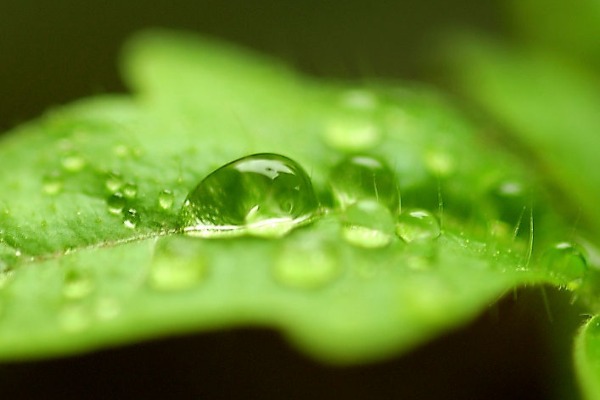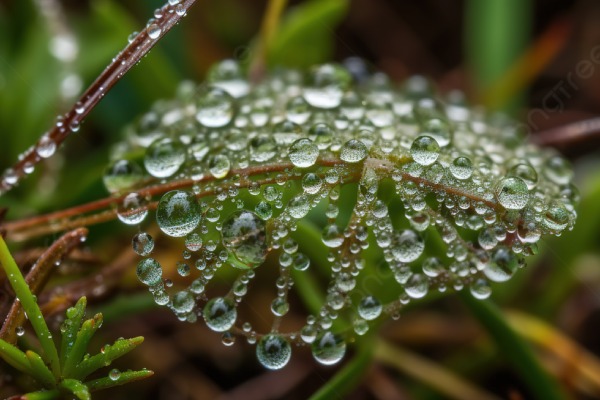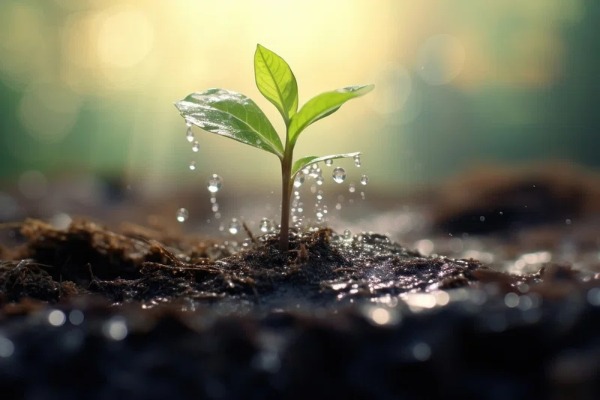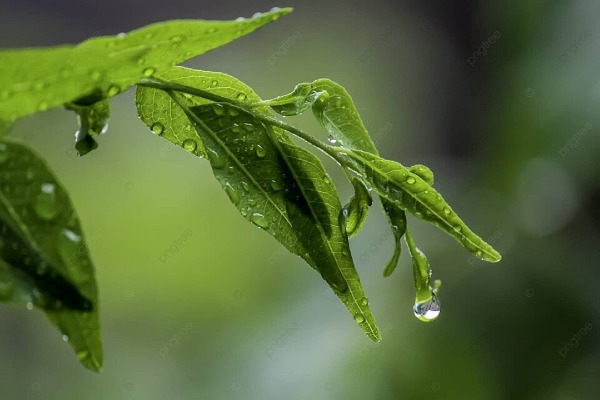Everyone has noticed small water droplets forming at the tips of your plant’s leaves, especially in the morning. Various natural processes, including transpiration, dew, and guttation can form these droplets. These are the natural methods plants use to handle excess water. They also take place for both the wild and indoor plants. Though they appear similar, these processes are different from each other. It is, therefore essential to know these processes and how they differ. In this article, we shall take a closer look at these processes, what their causes are, and how they relate to your plants.
What are water droplets on plants?
Water droplets on plants are not just ordinary water. They are made from plant sap which contains various substances like minerals, sugars, and proteins. As the plant roots absorb water from the soil, the water then spreads through the vine. Similarly, any extra water that the plant doesn’t need is released in tiny droplets from the tips of the leaves. Well, such droplets form only at the edges of the leaves through tiny openings called hydathodes. When this excess water forms droplets, it can look like tears or beads of sweat on the leaves. Water droplets are more likely to appear on plants at night and in the early morning. During this time, the plant’s transpiration rate is low or stops. However, some plants like corn can release water droplets during the day.

What causes water droplets on plant leaves?
Water droplets on plant leaves can appear for three main reasons, transpiration, dew, and guttation. Each of these causes is related to different plant processes or environmental conditions.
Transpiration
Transpiration refers to the loss of water vapor from the aerial part of the plant, which mainly comprises leaves. A plant absorbs water through its roots. Once it has enough, it releases the excess water through its leaves. Any excess of water transpired as vapor through tiny openings called stomata on the leaves. If a plant releases more water than it can evaporate where small droplets may form. This is not the same thing as secretion. It occurs throughout the entire leaf, particularly when the temperature is high. It is more likely under dry conditions as well and is influenced by factors such as humidity, wind, and the nature of the stomata.
Dew
Dew forms due to a temperature difference between the plant’s surface and the surrounding air. When the temperature of the plant drops below a certain temperature known as dew point. This is the point where the air around the plant cannot retain all the moisture in it anymore, and thus, the excess moisture condenses on the cooler surface of the plant’s leaves. This causes visible droplets of water on the leaves. This normally occurs during the night or sometimes early morning, especially before sunrise, when temperatures are at their lowest.
Guttation
Unlike transpiration, guttation involves the direct secretion of excess water and minerals from the plant. This occurs through specialized structures known as hydathodes, which are often located at the leaf margins. Guttation mostly takes place when plants take up more water than that required for their actual needs. The excess water is thus pushed out in the form of liquid droplets. Guttation is most common in certain types of plants like succulents and various fruits and vegetable plants. It generally occurs when the temperature is low, during the early morning, or at night when the humidity is high and the rate of transpiration is low.

Do water droplets damage the plants?
Single droplets of water generally do not harm plants. Water is essential for plant growth and survival. However, irrigation methods and environmental conditions can cause complications for plants. If droplets stay on leaves, especially in direct sun, they could act like a magnifying glass and burn the leaves. To avoid this, water your plants in the early morning or late afternoon.
Similarly, using harsh or chlorinated water can potentially cause damage to plants. While rainwater or purified water is more friendlier to plants. Water that remains stagnant or excessively moist soil can cause root rot and fungal diseases. Therefore, proper drainage should be made possible to prevent water logging. Although it is rare, large quantities of droplets can harm sensitive foliage or cause soil erosion in extremely dry or windy circumstances. Rainfall also forms droplets on the leaves of a plant and can stay on them until they evaporate.
How to identify overwatering in your plants?
It will be quite normal when the droplets can be seen on plants. These droplets can come from dew (water that forms on the surface due to condensation), transpiration (water released from the plant’s leaves), or guttation (water that comes out of the tips of the plant). However, if you notice a lot of droplets, it might mean there is a problem with overwatering.
Different plants show different signs of overwatering. Common signs include leaves turning yellow or brown, or falling off quickly. If the soil in your plant’s pot is still wet after a week or two, the plant has likely been overwatered. Similarly, if the base of your plant feels soft and mushy, it usually means that it has been overwatered and is starting to rot. This problem often happens with cacti and succulents. Tropical vining plants such as pothos and philodendrons will drop leaves even when the soil is damp and the roots start rotting due to overwatering.
How to control water droplets?
Water droplets can be controlled through your watering routine. Water your plants in the morning or during the day. Let any excess water drain from the soil before it gets dark. Remember to also pour off any excess water that collects in the plant saucers. This not only prevents waterlogging of the soil, it also reduces the chance of guttation occurring.
Conclusion
In conclusion, the presence of water droplets on your plant’s leaves is a natural phenomenon caused by a variety of processes including transpiration, dew production, and guttation. These droplets have been made of plant sap that helps plants regulate excess water. While these processes are often harmless, it is critical to understand their sources and consequences, as well as how they may reveal underlying problems such as overwatering or high humidity. You may preserve the health and vibrancy of your plants while reducing the risks caused by water droplets by paying attention to their watering requirements and environmental circumstances.

Also read, Learn to Build a Water Garden Stocked Full of Fish and Plants!
Frequently Asked Questions
1. What are the small water droplets I see on my plant’s leaves?
These droplets are not just ordinary water. They consist of plant sap, which contains minerals, sugars, and proteins. As plants absorb water from the soil, any excess water that isn’t needed by the plant is expelled through small openings called hydathodes at the leaf tips. This often occurs during the night or early morning when transpiration is low.
2. Can water droplets indicate a plant’s overall health?
While occasional water droplets are normal and a part of natural processes like transpiration, dew formation, or guttation. On the other hand, consistent excessive droplets could be a sign of overwatering or high humidity. Monitoring these droplets, along with other plant symptoms, can help you determine the plant’s health.
3. Why do water droplets appear more frequently on some plants than others?
Certain plants are more prone to guttation or dew formation due to their physiology. For example, succulents and certain fruits and vegetable plants are more likely to exhibit guttation. Environmental conditions like humidity, temperature, and soil moisture also play a role in the frequency of water droplets.
4. Can water droplets on leaves lead to fungal infections?
Yes, water droplets on leaves can produce a humid environment that promotes fungal infections, particularly if the droplets remain for an extended period. To reduce the risk, water your plants in the morning so that the leaves can dry during the day, and provide sufficient air circulation around them.
5. Can I wipe off the water droplets on my plant leaves?
Yes, you can gently remove water droplets off your plant leaves, especially if you are concerned about fungal diseases or if the droplets are in direct sunlight, which could cause leaf damage. Use a delicate cloth to avoid hurting the leaves.
